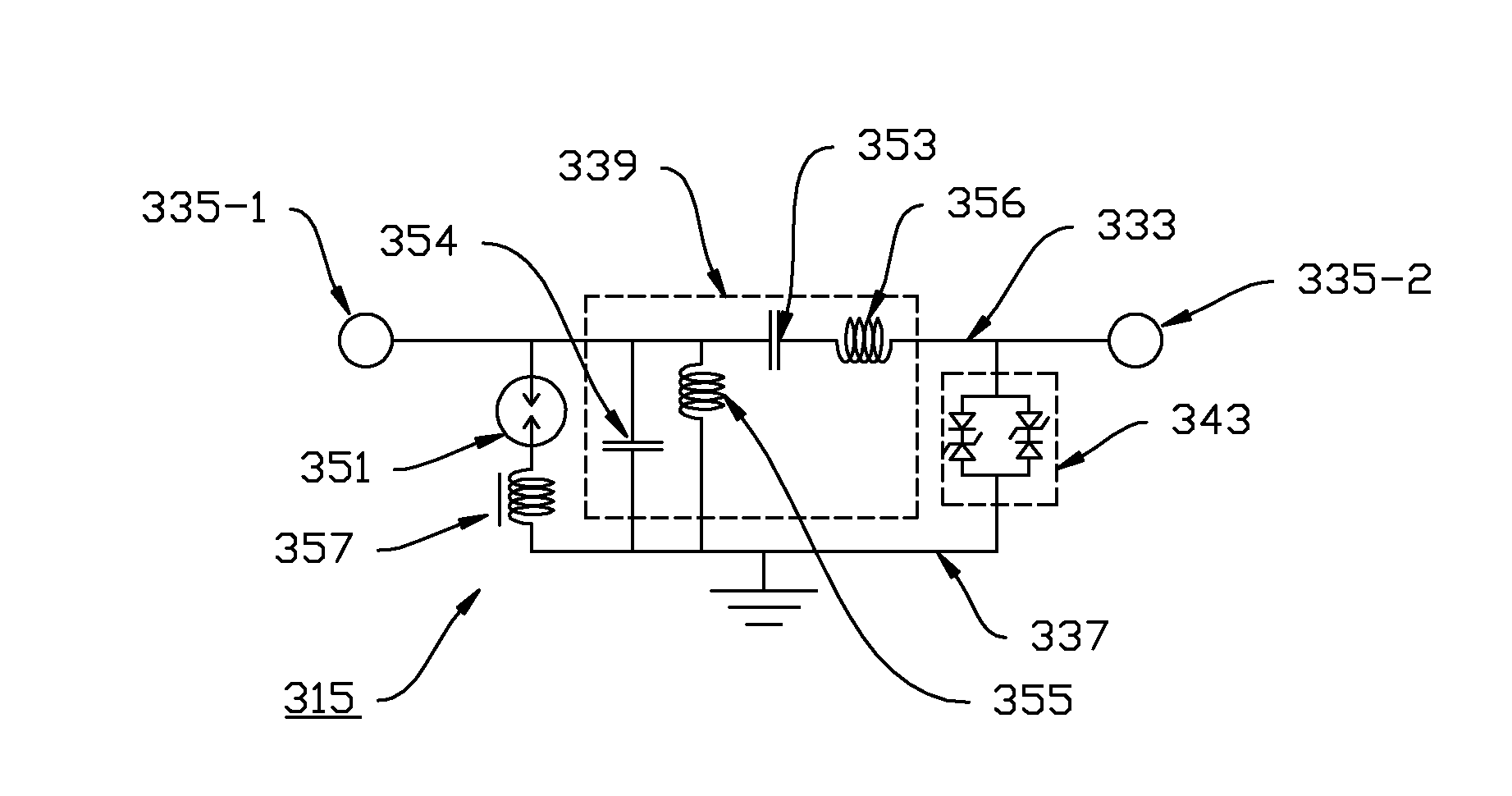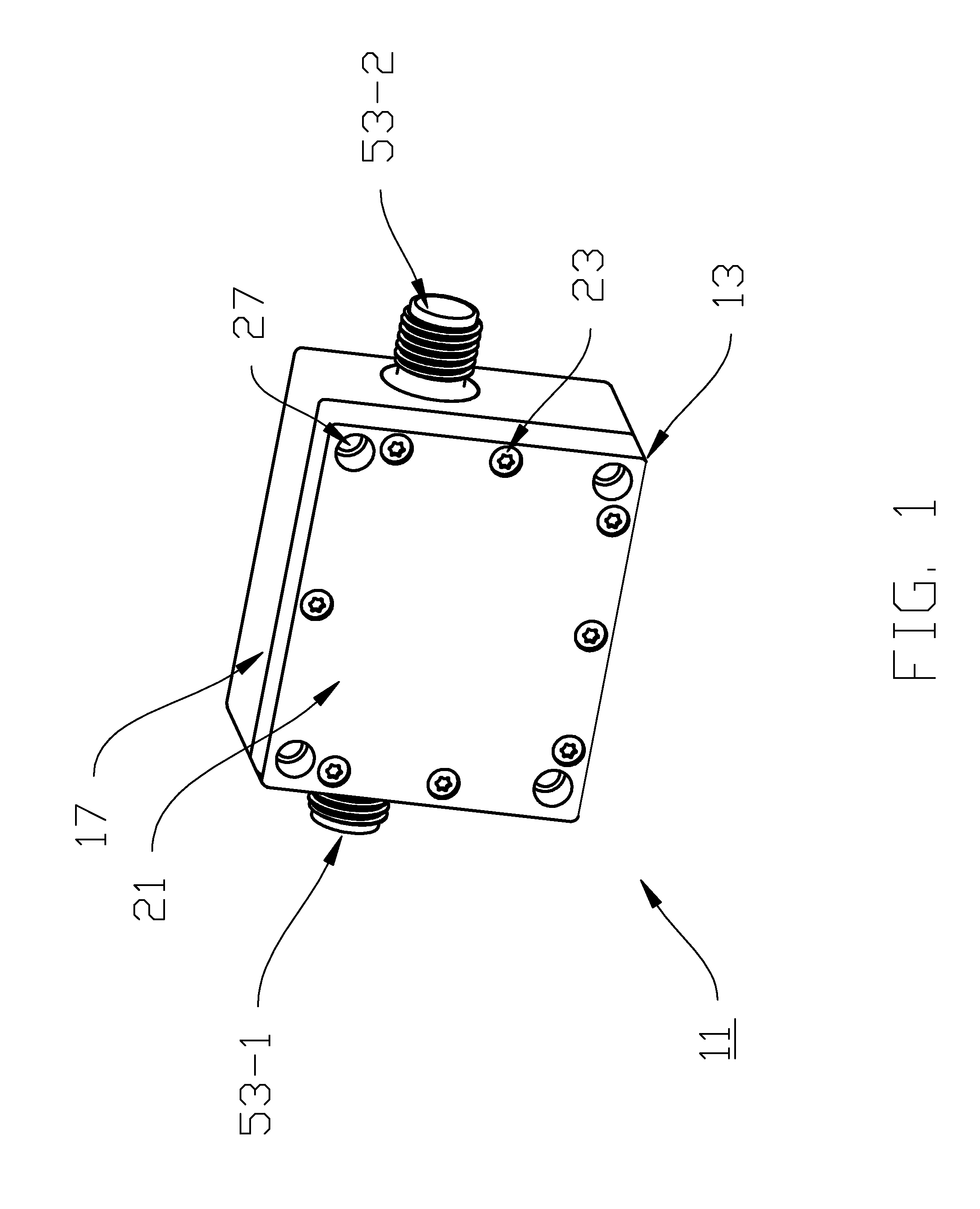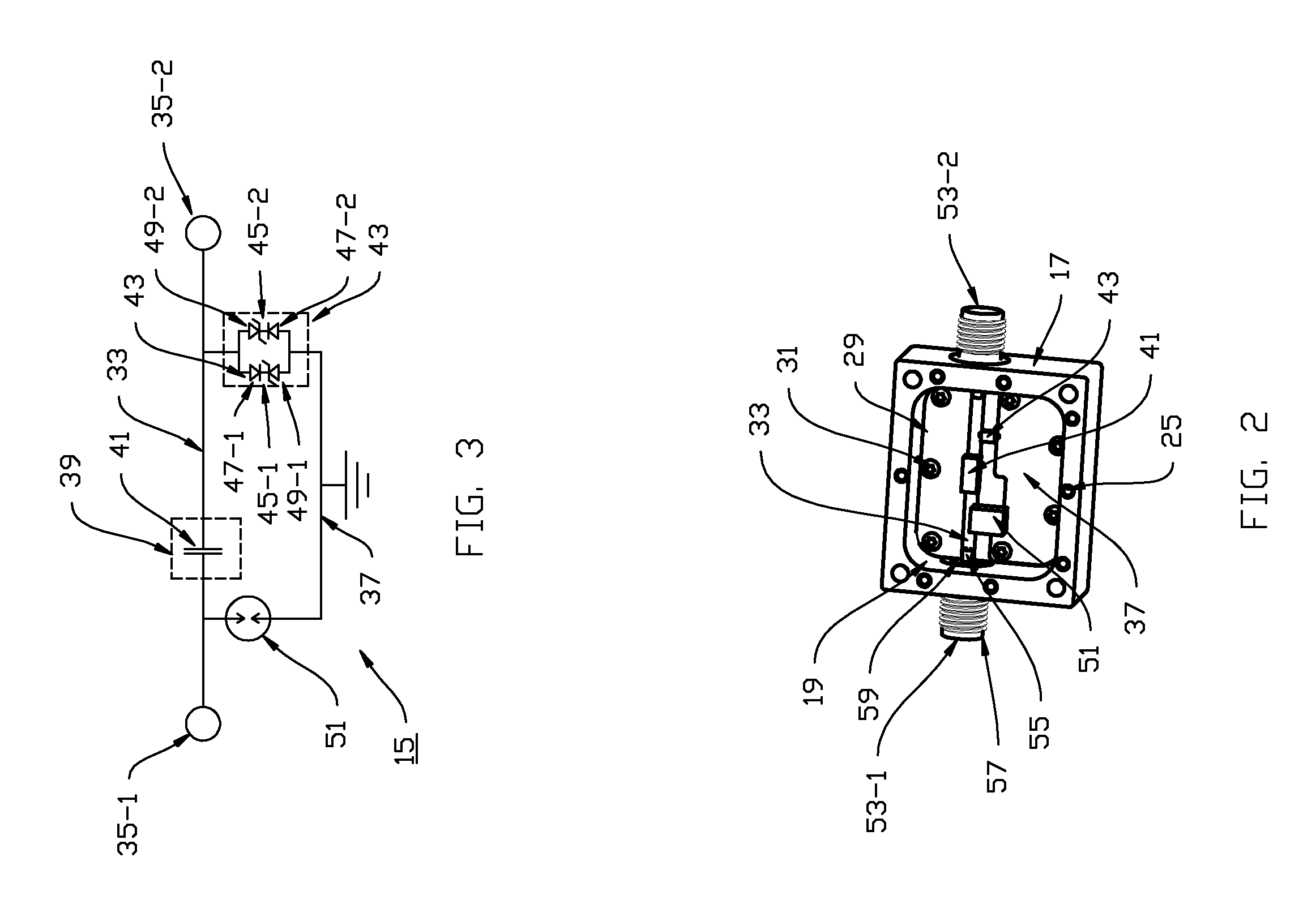Protective device
a protection device and electromagnetic technology, applied in emergency protective arrangements for limiting excess voltage/current, electrical equipment, multiple-port networks, etc., can solve the problems of the majority of destructive transient energy and the energy that falls below the operational frequency band is often blocked, etc., to achieve the effect of reducing the cost of manufacturing, reducing the cost of operation, and ensuring the quality of the desired electrical energy
- Summary
- Abstract
- Description
- Claims
- Application Information
AI Technical Summary
Benefits of technology
Problems solved by technology
Method used
Image
Examples
second embodiment
[0070]For instance, referring now to FIG. 4, there is shown a front perspective view of a protective device constructed according to the teachings of the present invention, the protective device being identified generally by reference numeral 111.
[0071]As can be seen, protective device 111 is similar to protective device 11 in that protective device 111 includes an enclosed housing, or casing, 113 into which is disposed an electrical circuit 115, with electrical circuit 115 being designed principally to provide overvoltage protection to a low-voltage circuit.
[0072]Referring now to FIG. 5, electrical circuit 115 is similar to electrical circuit 15 in that electrical circuit 115 comprises (i) a transmission line, or through path, 133 that extends in electrical communication between an input, or exposed, terminal 135-1 and an output, or treated, terminal 135-2, (ii) a filter 139 for treating high-voltage, transient electromagnetic impulses that fall primarily below the operational freq...
third embodiment
[0080]For instance, referring now to FIG. 6, there is shown a protective device constructed according to the teachings of the present invention, the protective device being identified generally by reference numeral 211.
[0081]As can be seen, protective device 211 is similar to protective device 111 in that protective device 211 includes an enclosed housing, or casing, 213 into which is disposed an electrical circuit 215, with electrical circuit 215 being designed principally to provide overvoltage protection to a low-voltage circuit.
[0082]Referring now to FIG. 7, electrical circuit 215 is similar to electrical circuit 115 in that electrical circuit 215 comprises (i) a transmission line, or through path, 233 that extends in electrical communication between an input, or exposed, terminal 235-1 and an output, or treated, terminal 235-2, (ii) a filter 239 for treating high-voltage, transient electromagnetic impulses that fall primarily below the operational frequency band, (iii) a diode-...
PUM
 Login to View More
Login to View More Abstract
Description
Claims
Application Information
 Login to View More
Login to View More - R&D
- Intellectual Property
- Life Sciences
- Materials
- Tech Scout
- Unparalleled Data Quality
- Higher Quality Content
- 60% Fewer Hallucinations
Browse by: Latest US Patents, China's latest patents, Technical Efficacy Thesaurus, Application Domain, Technology Topic, Popular Technical Reports.
© 2025 PatSnap. All rights reserved.Legal|Privacy policy|Modern Slavery Act Transparency Statement|Sitemap|About US| Contact US: help@patsnap.com



